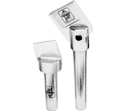Read these ten tips for best use of single point diamond dressers
Diamond is the hardest known substance to the man on earth. It is also the purest form of carbon that acquires a perfectly symmetrical structure due to the extreme temperature and pressure conditions in the earth strata. While the earliest use of diamonds was in ornaments, the industry also developed fancy with these stones; mainly because of the high hardness quotient that makes it apt for cutting and grinding applications. The diamond edges cut through to remove the materials which are less hard relative to it. Diamond cutters and grinders use diamonds that are studded at the surface. While these are very durable tools with least wear and tear due to impact with the substrate, some tips should still be considered to ensure best results and highest durability benefits. Single point diamond cutting tools manufacturer firms recommend the following tips for best use -
- It is better to incline the tool at an angle of 10 - 15 degrees to the wheel radius. Also, point the tool in the direction of rotation of the wheel and this will aid in maintaining a sharp point consistently.
- Because the diamond tools pulverize the vitrified bond, the infeed needs to be .001 when the dressing is being done with the single point diamonds. Excess infeed could cause the wheel to develop cracks and the bonds will begin to disintegrate. The gullets that develop lead to loading due to the chips that are formed on the substrates. Overheating can also emerge as a problem.
- For straight dressing applications, sharp tipped octahedral crystals should be used. Thus, even while turning the tool six to 12 indices per revolution, the points remain sharp and intact.
- While diamonds are very hard and resist changes in its structure, the extreme temperature could be a problem as this can transform a diamond into graphite – another carbon form but with different structure. Use of coolant is recommended to keep the temperature low; also much temperature gradient can cause cracking.
- Diamond dressers manufacturer firms recommend that by shattering the existing gravel grains, the new abrasive particles of diamonds could be revealed towards better grinding efficiency of the tool. This can be done regularly to maintain optimized performance.
- The dressing should be attempted through the center of the wheel so as to avoid the destruction of the best quality diamonds which suffer when the dressing is attempted from the sides.
- To prevent the tapering of the wheel, put the single point dresser tool closest to the grinding material.
- The grain size in the grinding wheel depends on the longitudinal feed and this determines the structure and surface of the grinding tool. Desired and refined surfaces could be achieved through lesser feed rates.
- If the diamond on the tool is showing up flat surfaces then it is advised to rotate the dresser tool at 20 to 40 degrees in the shank. This will keep the surface conical and the efficiency would be maintained for long, say diamond cutting tools suppliers.
- Do not let the diamond to erode till the shank gets visible; or else the stone would be disintegrated and move out from position thus damaging the tool.













